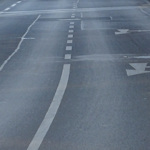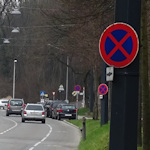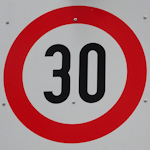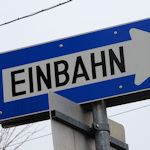
Driving around a foreign city requires an understanding of local rules and etiquette, particularly on parking, speed limits and tolls. So here a few tips and articles for you…
- See also:
Make the most of your stay with my…
Exhibition tips for 2024

Concert tips for 2024

Tips for car drivers

(This way to Hungary and the A4 motorway)
Before you use a car in Vienna, it’s worth mentioning that the public transport system here is cheap, fast, efficient, reliable, and regular. Once you’re in the city, it often makes sense to switch to trams, buses, and subways.
Before we start…
As a driver in a strange and foreign location, you’ll obviously want to familiarise yourself with local safety regulations, driving rules etc.
Check out the information in English provided by the Austrian government. Below are selected additional tips for car drivers – with explanatory photos – from a local (i.e. me).
And, in case you’re wondering, vehicles drive on the right in Austria.
Parking

Driving is one thing, parking your car quite another. You’re competing with locals who show no mercy and who’ve trained all their lives to sniff out spaces.
Pretty much everywhere in Vienna is covered by a single street “paid parking” zone. This has freed up spaces previously occupied by, for example, commuters.
Finding a parking spot is easier now. But you likely have to pay for it, depending when you park and for how long. We have public car parks, too, of course.
Get tips on where to park & street parking and help with filling out the prepaid parking voucher you need much of the time in Vienna when parking on the street.
Of course, many hotels have their own parking solution. Nearly all tourist attractions, however, don’t have an attached car park (medieval monarchs and 19th-century urban planners didn’t think that far ahead). But such sites may be near a commercial alternative.
Speed limits

Learn about local speed limits (which aren’t always displayed on signs). Most roads within Vienna have either 30 km/h or 50 km/h limits.
Motorways always have speed limits. This fact may surprise people coming over the border via German autobahns, though the traffic police are no doubt more than happy to explain the difference between Austria and its neighbour.
The motorway toll

Discover how the motorway toll system works.
Most city roads are free to use, naturally, but Austria has a nationwide toll system for motorways/freeways. This requires a pre-paid toll sticker (or digital equivalent) for cars, for example.
Vienna is a big place with around 2 million inhabitants, so it does have a couple of freeways within the city limits, particular around the outskirts.
A little extra driving advice

And a few bonus articles on special driving cases:
- Find out what signs about an Einbahn mean (basically “one-way street,” though take care: the Einbahn may have a cycle lane going in the opposite direction).
- What is a Rettungsgasse? You certainly need to understand the Rettungsgasse concept if driving on Austria’s dual carriageways or motorways. It refers to the compulsory formation of a corridor free of vehicles between lanes for emergency service access if traffic is at (or coming to) a standstill.
- Finally, get ten bonus tips to help make driving around Vienna a little pleasanter (and safer for everyone).